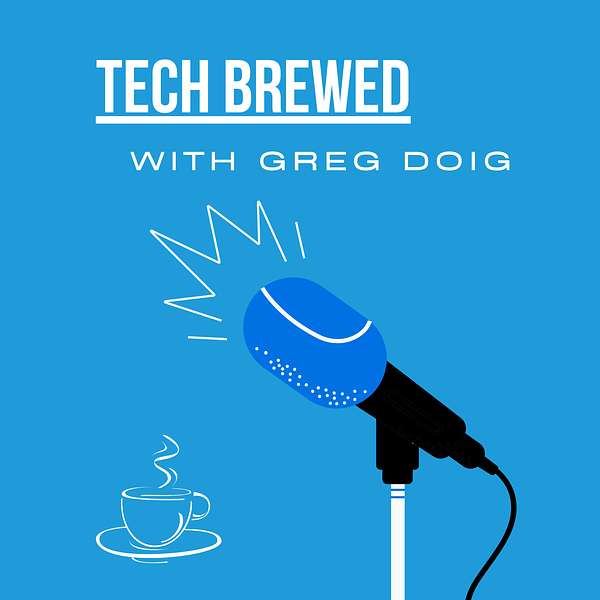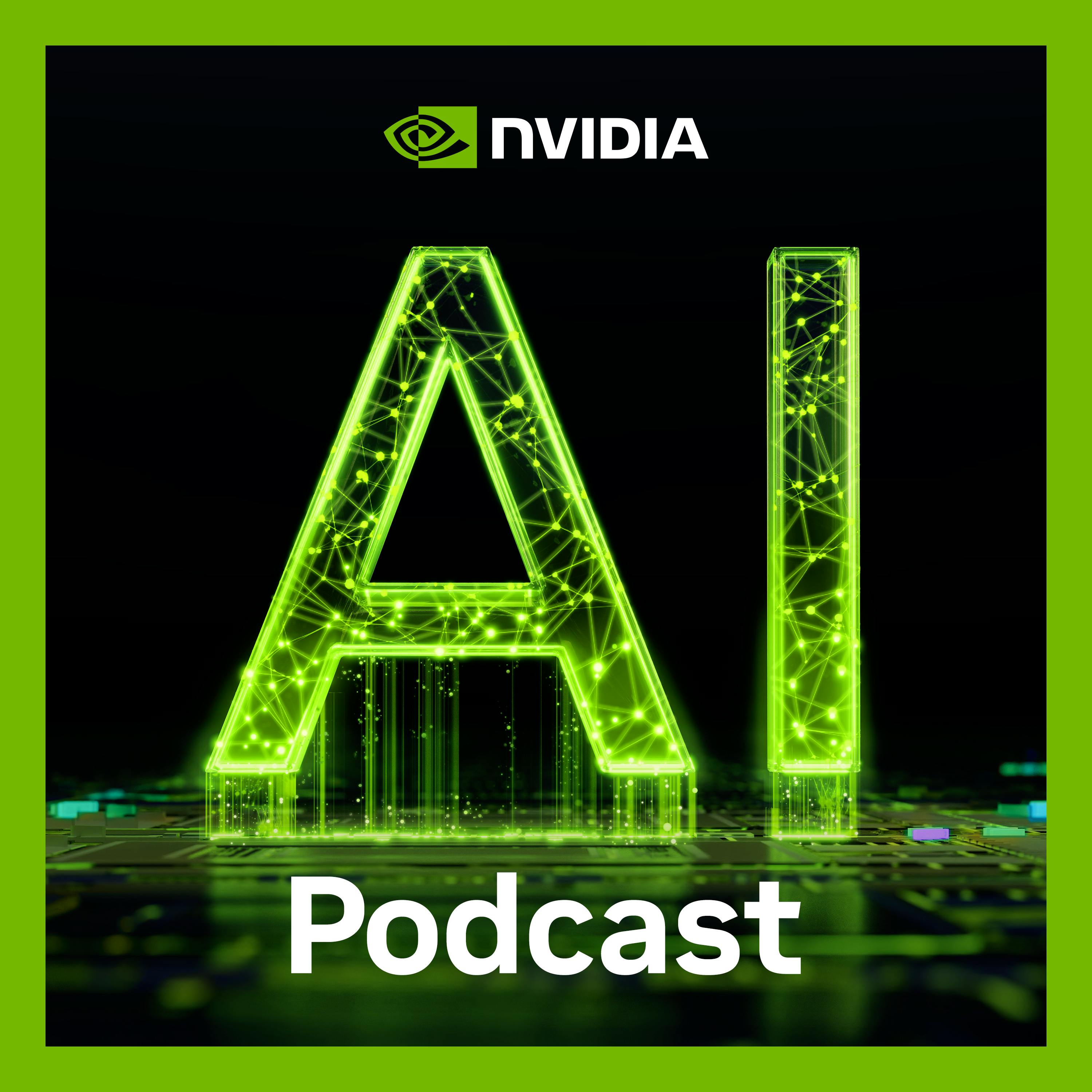
Tech Brewed
Welcome to Tech Brewed, your go-to podcast for the latest in technology products, training, and tips. Whether you're a tech enthusiast or a business professional, our show offers valuable insights into the ever-evolving world of technology.
What We Cover
Home and Business Technology Products
We delve into the latest gadgets and tools that can enhance your home and business environments. From smart home devices to enterprise-level solutions, we keep you updated on the best products for your needs.
Technology Training and Tips
Our episodes are packed with practical advice and training tips to help you maximize your tech investments. Whether you want to improve your cybersecurity or optimize your workflow, we've got you covered.
Creative Technology Software and AI
In today's digital age, creative technology software and artificial intelligence are game-changers. We explore how these innovations transform various industries and offer insights into their practical applications.
Featured Segments
AI and Its Impact
Discover how AI is changing the workplace and driving innovation. Our discussions range from improving audio quality with AI to extending life through advanced technologies.
Practical AI
Our goal is to make artificial intelligence accessible and practical for everyone. We break down complex topics into easy-to-understand segments, ensuring you stay ahead of the curve.
Join us on Tech Brewed for a deep dive into the tech world, where we blend expert knowledge with practical advice to help you navigate the digital landscape. Subscribe now and stay informed on the latest trends and innovations!
Tech Brewed
Exploration Of the OSI Model
Have you ever sent a message to a friend halfway across the world and marveled at how quickly it arrived? Or maybe you've wondered why your Netflix sometimes buffers right at the climax of your favorite show. Well, today we'll peek behind the curtain of the internet and explore the OSI Model.
Subscribe to the weekly tech newsletter at https://gregdoig.com
Hey there, tech enthusiasts. Welcome to another sip of tech knowledge on Tech Brewed, your go to spot for all things tech. So grab your favorite mug, and let's dive in together. Cheers to learning something new. I'm your host, Greg Doig, and today we're diving into the fascinating world of computer networks. Ever wondered how your cat memes travel across the Internet? Stick around, because we're about to unravel that mystery. Have you ever sent a message to a friend halfway across the world and marveled at how quickly it arrives? Or maybe you've wondered why your Netflix sometimes buffer right at the climax of your favorite show. Well, today, we're gonna give you a peek behind the curtain of the Internet and explore something called the OSI Model. Now, before you run away thinking this sounds too technical, let me assure you. We're going to break this down using everyday analogies that'll make you the star of your next tech savvy dinner party. So what exactly is the OSI model? Think of it as a travel plan for your data. Just like how you might go through security, boarding, and flying when you travel, your data goes through 7 distinct stages on its journey across the Internet. Each of these stages, or layers, is handled by different digital specialists. Let's break down these 7 layers starting from the top. Number 1. The application layer. This is your digital travel agent. This is where your journey begins. It's like a travel agent planning your trip. When you open your web browser or email client, you're interacting with the application layer. It's the friendly face of the Internet that you actually see and click on. Here's a common issue at the application layer. If you ever wondered why a website won't load, often it's an application layer problem. Maybe the server is down or there's a bug in the website's code. Next up, number 2, the presentation layer. This is the translator. Think of this as your trusty translator making sure everyone understands each other. It handles things like encryption, data compression, and making sure the emojis you send look the same on your friend's phone. Here's a fun fact. If you ever sent an emoji that looked different on your friend's device, that's a presentation layer hiccup. Number 3. The session layer is like a tour guide keeping your group together. It manages the communication sessions between computers. When you log in to a website, the session layer keeps track of who you are as you click around. And if you've ever been mysteriously logged out of a website, blame the session layer. It might have lost track of your tour group. Number 4, the transport layer. This is the postal service. Now we're getting to the nitty gritty. The transport layer is like a super efficient postal service. It breaks your data into smaller packets, kinda like putting your messages into envelopes, and make sure they all arrive correctly. And have you ever heard of TCP and UDP? Well, these are the transport layer protocols. TCP is like sending a package with tracking, slower but reliable. UDP is like regular mail, faster but less guaranteed. Number 5, the network layer. This is the GPS and traffic control of the Internet. The network layer is your data's GPS and traffic control system. It figures out the best route for your data packets to travel, navigating the complex web of the Internet. And just like how your GPS might reroute you around a traffic jam, the network layer finds the most efficient path for your data. And number 6. The data link layer. This is the local tour bus. So we're almost at the bottom. Here we go. The data link layer is like a local tour bus moving data between stops on the same network. It's responsible for getting data from one network device to another. There's a common problem at this layer. Wi Fi issues often happen at this layer. If your Wi Fi keeps disconnecting, the data link layer might be struggling. And last but not least, number 7, the physical layer. This is where the roads and vehicles are. The actual hardware of networking. This is the roads, cars, and planes of our data journey. It deals with the physical transmission of data whether that's through Ethernet cables, fiber optic lines, or wireless signals. And here's a troubleshooting tip. If your Ethernet cable isn't working, you're dealing with a physical layer problem. Now you might be wondering, do we really need all 7 layers? Couldn't we do it with fewer? Great question. The beauty of the OSI model is its modularity. By breaking network communication into these distinct layers, it's easier to develop, troubleshoot, and improve network technologies. Each layer can be updated or replaced without affecting the others. Pretty neat. Right? In the real world, networks don't always strictly follow the OSI model. Most modern networks use something called the TCPIP model, which is similar but condensed. However, understanding the OSI model is still incredibly useful, especially for troubleshooting. So let's put this knowledge into action. Say your video call freezes, how would you approach the problem using the OSI model? Is it a physical layer issue? Well, then check your cables and Wi Fi signal strength. Is it a data link layer issue? Maybe your router needs a restart. Network layer issue? Could be Internet connectivity problem. Or a transport layer issue. Your video might be using UDP, which can lead to lost packets and freezing, or session presentation application layer issues. The issue could be with the video call software itself. So see how understanding these layers helps you methodically troubleshoot the problem? Well, to wrap it up, next time you send a message, stream of a video, or browse a website, take a moment to appreciate the incredible journey your data is making. From the application layer's user friendly interface through the various processing and routing layers all the way down to the physical transmission of electrical or light signals, It's a marvel of modern technology. And there you have it. You've just taken a whirlwind tour of the OSI model. You're now equipped to understand the basics of how data travels across networks, and you've got some new tech lingo to impress your friends. That's all for this episode. I hope you enjoyed the dive into the OSI model, and come back for more future topics in technology. And that's a wrap. Thanks for sticking around, friends. I really appreciate your time and hope you found our time together enjoyable. Don't forget to like, share, or comment if you feel inclined. Until next time, take care and keep smiling.
Podcasts we love
Check out these other fine podcasts recommended by us, not an algorithm.

Tech It Out
Radio America
My First Million
Hubspot Media
The Startup Ideas Podcast
Greg Isenberg
Lex Fridman Podcast
Lex Fridman
The Rest Is History
Goalhanger
